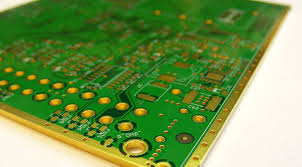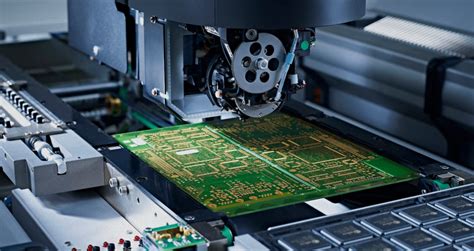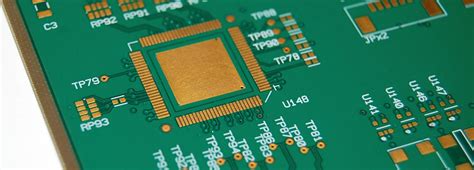High temperature flex pcb
Advantages Of High Temperature Flex PCB In Harsh Environments
High temperature flexible printed circuit boards (PCBs) have emerged as a pivotal innovation in the realm of electronics, particularly in applications that demand resilience and reliability under extreme conditions. These advanced PCBs are designed to withstand elevated temperatures, making them indispensable in harsh environments where traditional circuit boards might fail. The advantages of high temperature flex PCBs are manifold, and their significance is underscored by their ability to maintain performance and integrity in challenging settings.
One of the primary advantages of high temperature flex PCBs is their exceptional thermal stability.
Unlike conventional PCBs, which may degrade or malfunction when exposed to high temperatures, these specialized boards are constructed using materials that can endure significant thermal stress. This characteristic is particularly beneficial in industries such as aerospace, automotive, and oil and gas, where electronic components are often subjected to extreme heat. By maintaining their structural and functional integrity, high temperature flex PCBs ensure the reliability and longevity of electronic systems in these demanding environments.
In addition to thermal stability, high temperature flex PCBs offer remarkable flexibility, which is a crucial attribute in applications where space and weight are at a premium.
The ability to bend and conform to intricate shapes allows these PCBs to be integrated into compact and complex assemblies, thereby optimizing the use of available space. This flexibility not only facilitates innovative design solutions but also contributes to the reduction of overall system weight, a critical factor in industries such as aerospace and automotive, where every gram counts.
Moreover, the durability of high temperature flex PCBs extends beyond their thermal resilience.
These boards are also resistant to a variety of environmental stressors, including vibration, shock, and chemical exposure. This robustness ensures that they can operate reliably in environments characterized by mechanical stress and corrosive substances. For instance, in the oil and gas industry, where equipment is often exposed to harsh chemicals and physical impacts, high temperature flex PCBs provide a dependable solution that minimizes the risk of failure and the associated costs of downtime and maintenance.
Furthermore, the use of high temperature flex PCBs can lead to enhanced performance and efficiency of electronic systems.
By enabling the design of more compact and lightweight devices, these PCBs contribute to improved thermal management and energy efficiency. This is particularly advantageous in applications where heat dissipation is a critical concern, as the efficient management of thermal loads can prevent overheating and extend the lifespan of electronic components.
In conclusion, the advantages of high temperature flex PCBs in harsh environments are substantial and multifaceted.
Their ability to withstand extreme temperatures, coupled with their flexibility and durability, makes them an ideal choice for a wide range of applications. As industries continue to push the boundaries of technology and operate in increasingly challenging conditions, the demand for reliable and resilient electronic solutions will only grow. High temperature flex PCBs, with their unique combination of properties, are poised to play a crucial role in meeting this demand, ensuring that electronic systems remain robust and efficient even in the most demanding environments.
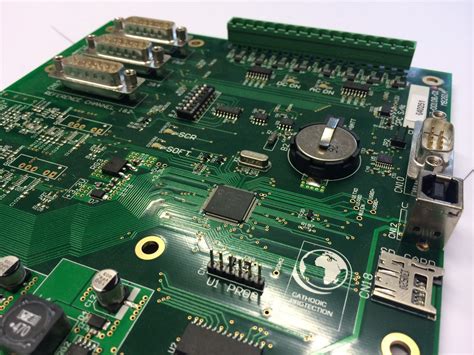
Material Innovations In High Temperature Flex PCB Design
In recent years, the demand for high temperature flexible printed circuit boards (PCBs) has surged, driven by the need for advanced electronic solutions in industries such as aerospace, automotive, and industrial applications. These sectors require electronic components that can withstand extreme conditions, including high temperatures, without compromising performance or reliability. Consequently, material innovations in high temperature flex PCB design have become a focal point for researchers and manufacturers alike, as they strive to meet these rigorous demands.
One of the primary challenges in designing high temperature flex PCBs is selecting materials that can endure elevated temperatures while maintaining their mechanical and electrical properties.
Traditional materials used in standard PCBs, such as FR-4, are inadequate for high temperature applications due to their limited thermal stability. As a result, engineers have turned to advanced materials like polyimide and liquid crystal polymer (LCP) substrates, which offer superior thermal resistance and flexibility. Polyimide, in particular, is renowned for its ability to withstand temperatures up to 260°C, making it a popular choice for high temperature applications.
In addition to substrate materials, the choice of conductive materials is crucial in high temperature flex PCB design.
Copper, the most commonly used conductor in PCBs, can suffer from oxidation and increased resistivity at high temperatures. To address this issue, manufacturers have explored alternative conductive materials such as silver and gold, which exhibit better thermal stability and conductivity. However, these materials come with higher costs, prompting ongoing research into cost-effective solutions that do not compromise performance.
Furthermore, the development of advanced adhesives and encapsulants has played a significant role in enhancing the thermal performance of high temperature flex PCBs.
These materials are essential for bonding layers and protecting sensitive components from environmental stressors. Innovations in adhesive technology have led to the creation of thermally conductive adhesives that not only provide strong bonding but also facilitate heat dissipation, thereby improving the overall thermal management of the PCB.
Another critical aspect of high temperature flex PCB design is the implementation of robust thermal management strategies.
As electronic devices become more compact and powerful, efficient heat dissipation becomes increasingly important to prevent overheating and ensure longevity. Techniques such as the integration of thermal vias, heat sinks, and advanced cooling systems are employed to manage heat effectively. These strategies, combined with the use of thermally conductive materials, help maintain optimal operating temperatures even in the most demanding environments.
Moreover, the miniaturization of electronic components has necessitated innovations in high temperature flex PCB design.
As devices shrink in size, the need for flexible circuits that can fit into tight spaces while maintaining high performance becomes paramount. This has led to the development of thinner and more flexible substrates, as well as advanced fabrication techniques that allow for the creation of intricate circuit patterns. These advancements enable the production of high temperature flex PCBs that are not only durable but also versatile enough to meet the diverse needs of modern electronic applications.
In conclusion, material innovations in high temperature flex PCB design are pivotal in addressing the challenges posed by extreme operating conditions. Through the use of advanced substrates, conductive materials, adhesives, and thermal management strategies, manufacturers are able to produce PCBs that deliver exceptional performance and reliability. As technology continues to evolve, ongoing research and development in this field will undoubtedly lead to even more sophisticated solutions, further expanding the possibilities for high temperature applications across various industries.
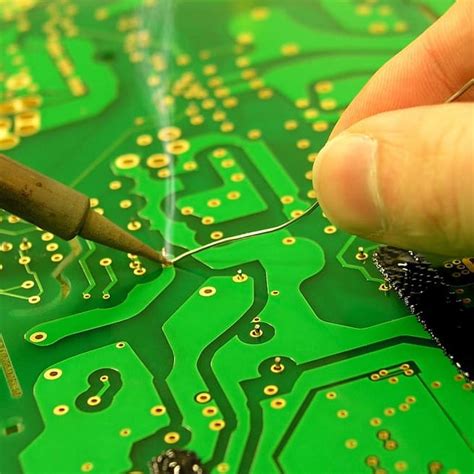
Applications Of High Temperature Flex PCB In The Automotive Industry
High temperature flexible printed circuit boards (PCBs) have become increasingly significant in the automotive industry, where the demand for reliable and efficient electronic systems continues to grow. As vehicles become more technologically advanced, the need for components that can withstand harsh conditions, including extreme temperatures, is paramount. High temperature flex PCBs offer a solution by providing the necessary durability and flexibility required in automotive applications.
One of the primary applications of high temperature flex PCBs in the automotive industry is within engine control units (ECUs).
These units are critical for managing various engine functions, including fuel injection, ignition timing, and emission control. Given their proximity to the engine, ECUs are exposed to high temperatures and vibrations. High temperature flex PCBs are designed to endure these conditions, ensuring consistent performance and reliability. Their ability to maintain functionality in such environments makes them indispensable in modern vehicles.
In addition to engine control units, high temperature flex PCBs are also utilized in transmission control systems.
These systems are responsible for managing the gear shifts in automatic transmissions, which are crucial for vehicle performance and fuel efficiency. The high temperatures generated by the transmission system necessitate the use of components that can withstand such conditions. High temperature flex PCBs provide the necessary resilience, ensuring that the transmission control systems operate smoothly and efficiently.
Moreover, high temperature flex PCBs are employed in the development of advanced driver-assistance systems (ADAS).
These systems, which include features such as adaptive cruise control, lane departure warning, and automatic emergency braking, rely heavily on electronic components to function effectively. The integration of high temperature flex PCBs in ADAS ensures that these systems remain operational under varying temperature conditions, thereby enhancing vehicle safety and performance.
Furthermore, the use of high temperature flex PCBs extends to lighting systems within vehicles.
Modern automotive lighting, including LED headlights and taillights, requires components that can endure high temperatures while maintaining optimal performance. High temperature flex PCBs are ideal for these applications due to their ability to dissipate heat efficiently, thus prolonging the lifespan of the lighting systems and improving energy efficiency.
Another significant application of high temperature flex PCBs is in battery management systems (BMS) for electric vehicles (EVs).
As the automotive industry shifts towards electrification, the demand for efficient and reliable battery management becomes crucial. High temperature flex PCBs play a vital role in monitoring and controlling the temperature, voltage, and current of battery cells, ensuring the safety and longevity of the battery packs. Their ability to withstand high temperatures is particularly important in preventing thermal runaway, a condition that can lead to battery failure.
In conclusion, the applications of high temperature flex PCBs in the automotive industry are diverse and essential. From engine and transmission control units to advanced driver-assistance systems, lighting, and battery management, these components provide the necessary durability and flexibility required in modern vehicles. As the automotive industry continues to evolve, the role of high temperature flex PCBs will undoubtedly expand, driven by the need for reliable and efficient electronic systems capable of withstanding the demanding conditions inherent in automotive environments.

Challenges And Solutions In Manufacturing High Temperature Flex PCB
The manufacturing of high temperature flexible printed circuit boards (PCBs) presents a unique set of challenges that require innovative solutions to ensure reliability and performance. As electronic devices continue to evolve, the demand for PCBs that can withstand extreme temperatures has increased, particularly in industries such as aerospace, automotive, and industrial applications. These sectors often operate in environments where standard PCBs would fail, necessitating the development of high temperature flex PCBs that can maintain functionality under thermal stress.
One of the primary challenges in manufacturing high temperature flex PCBs is the selection of appropriate materials.
Traditional materials used in standard PCBs, such as FR-4, are not suitable for high temperature applications due to their limited thermal stability. Instead, manufacturers must opt for materials like polyimide, which can endure higher temperatures while maintaining flexibility. Polyimide is favored for its excellent thermal resistance, mechanical strength, and chemical stability, making it an ideal choice for high temperature applications. However, the use of such specialized materials can increase production costs, posing a challenge for manufacturers to balance performance with cost-effectiveness.
In addition to material selection, the design of high temperature flex PCBs must account for thermal expansion and contraction.
As temperatures fluctuate, materials expand and contract at different rates, which can lead to mechanical stress and potential failure of the circuit. To address this, manufacturers employ advanced design techniques such as incorporating expansion joints and using staggered vias to distribute stress more evenly across the board. These design considerations help mitigate the risk of delamination and cracking, ensuring the longevity and reliability of the PCB.
Another significant challenge is the soldering process, which must be adapted to accommodate the high temperature requirements of these PCBs.
Traditional soldering techniques may not be suitable, as they can lead to issues such as solder joint fatigue and thermal cycling failures. To overcome this, manufacturers often use high temperature solder alloys, such as lead-free solders with higher melting points, to ensure robust connections that can withstand thermal stress. Additionally, advanced soldering techniques, such as laser soldering, are employed to provide precise control over the soldering process, further enhancing the reliability of the connections.
Testing and quality assurance are also critical components in the manufacturing of high temperature flex PCBs.
Rigorous testing protocols must be implemented to ensure that the PCBs can perform reliably under extreme conditions. This includes thermal cycling tests, where the PCB is subjected to repeated heating and cooling cycles to simulate real-world operating conditions. By identifying potential failure points during testing, manufacturers can make necessary adjustments to the design and materials, thereby improving the overall quality and performance of the final product.
In conclusion, the manufacturing of high temperature flex PCBs involves navigating a complex landscape of challenges, from material selection and design considerations to soldering techniques and testing protocols. By leveraging advanced materials and innovative design strategies, manufacturers can produce PCBs that meet the demanding requirements of high temperature applications. As technology continues to advance, the development of high temperature flex PCBs will play a crucial role in enabling the next generation of electronic devices to operate reliably in extreme environments. Through ongoing research and development, the industry is poised to overcome these challenges, paving the way for more robust and versatile electronic solutions.
